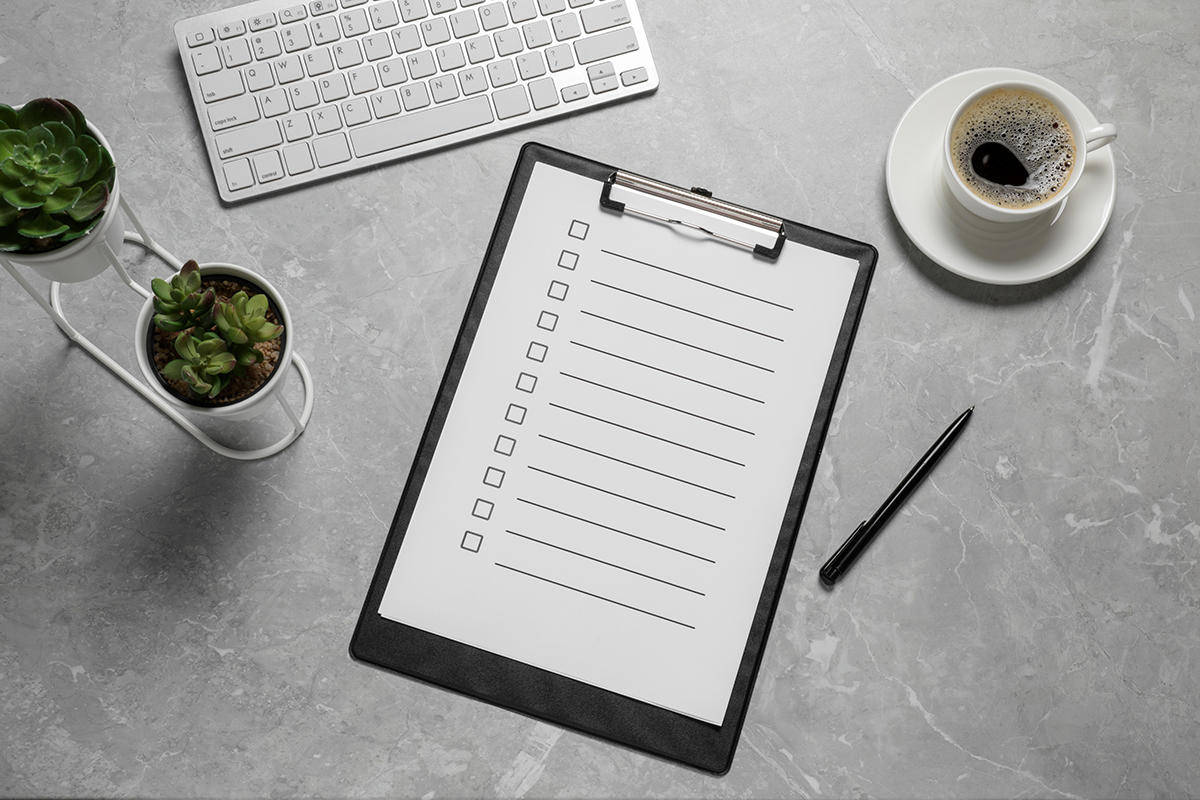Tracking blood sugar accurately is critical for proper diabetes management, as it will help patients to identify patterns and customize their treatment regimen effectively. The usual blood sugar range is 70 to 130 milligrams per deciliter (mg/dL). Regular monitoring can help prevent hyperglycemia (high blood sugar) and hypoglycemia (low blood sugar). Hyperglycemia is commonly accompanied by numbness, blurred vision, renal failure, heart attacks, and in some extreme cases, stroke.
In contrast, hypoglycemia is usually accompanied by seizures, loss of consciousness, and death, if not addressed. The information gathered from monitoring blood glucose levels can also give healthcare providers the insight to modify treatment plans and provide personalized care for diabetic patients.
With the help of a log sheet, you can effectively monitor your blood glucose levels in order to improve diabetes management and enhance your overall health. By taking daily, weekly, or monthly blood glucose readings, you can achieve better blood sugar control and minimize the risk of diabetes-related complications.
Therefore, this article will address the importance of having the log sheet, its components, and the most common types to help you manage your blood sugar levels. Free printable templates have also been provided in PDF format for your convenience.
What is a Blood Sugar Log Sheet?
A blood sugar log sheet, also referred to as a blood glucose log, is a form used to record blood sugar levels.
You can commonly use it to record and review blood glucose levels over a period of time. It should include the date and time of the readings in order to evaluate how effectively you are staying within the healthy range. It also includes details about diet, medication, and physical activity next to each reading to determine how they impact your blood glucose levels.
Detailed log sheets can also include A1C readings (hemoglobin HbA1c levels) to gauge average glucose levels over a period of two-three months. You can consult with your doctor to establish an appropriate management plan by documenting this information to minimize or prevent any complications.
Monitoring blood sugar levels manually can be challenging, and handwritten records may not provide additional features such as charts or graphs. Using Microsoft Excel, a spreadsheet can be created with columns for the date, time, sugar level, and additional notes about medication, diet, and physical exercise. Additionally, you can generate a chart to compare your glucose levels with the recommended levels. This allows your doctor to monitor your trend to optimize your medication.
However, creating a log sheet with MS Excel can be time-consuming, especially if you have other commitments. Therefore, you can download one of our free printable templates, which are in PDF format. With this document, the structure is already in place, and all you need to do is print it and populate it with data.
Why Using a Blood Sugar Log Sheet is Beneficial for You
Taking regular blood glucose readings might seem hectic, especially if you are overwhelmed with other responsibilities. However, there is considerable value in using a log sheet to record your blood sugar levels.
These include:
Helps identify patterns and trends
One of the most critical aspects of diabetes management is regular blood sugar monitoring. With a log sheet, you can identify trends and patterns by observing what causes your blood glucose levels to rise or fall, such as eating certain meals, exercising, or taking medication. This information can help you make necessary adjustments to your diabetes management plan.
Aids in making informed decisions
Consistent monitoring of blood glucose levels with a log sheet assists you in making informed decisions about your diet, exercise schedule, and medication. These decisions can help you live healthier by delaying or preventing future diabetes-related complications.
Provides a record for healthcare providers
An up-to-date log sheet can help your healthcare provider identify common patterns related to your blood sugar level. Based on your glucose levels, your doctor can address your concerns and design a management plan tailored to you.
Helps improve overall diabetes management
Since diabetes affects every patient differently, there is no specific management strategy. A log sheet allows you to ensure your current strategy is working or if there are any modifications you need to make. You can therefore manage what you eat and how you live without fatally raising or lowering your blood sugar levels.
Motivates and encourages self-management
Experiencing improvement in your blood sugar levels can encourage you to continue making informed health choices. When you record your blood glucose levels using a log sheet on a daily, weekly, or monthly basis, you are more likely to be health-conscious and adhere to your diabetes management plan.
Helps with meal planning
A log sheet can help you plan your meals, such as breakfast, lunch, and dinner, more efficiently. By monitoring your blood glucose levels before and after meals, you can identify the foods and portions that increase or lower your blood glucose levels. This can help you plan your meals and incorporate healthier options to maintain healthy levels.
Sections of a Blood Sugar Log Sheet
Monitoring blood sugar levels necessitates accuracy and attention. Otherwise, you risk aggravating the extent of your diabetes.
Outlined below are the essential components of the log sheet:
Target blood sugar
First, you need to record the target blood sugar levels your healthcare provider recommends for fasting, before eating, and after eating. This target range depends on your age, the extent of your diabetes, underlying conditions, and other considerations. If you are unsure about the blood sugar levels for your age and condition, you may refer to the suggested target ranges by the American Diabetes Association.
Below are the recommended blood glucose levels for diabetics:
- 80 to 130 mg/dL before a meal
- Below 180 mg/dL two hours after a meal
Date and time
Record the time and calendar date of the reading to allow you to monitor your glucose levels over time. This section will also enable your healthcare provider to identify trends in your blood sugar levels to devise a proper management plan.
pro tip
Consult your doctor and establish health-specific goals for blood sugar management. Use a log sheet to track progress towards these goals, as they can keep you focused and motivated throughout your treatment.
Blood glucose readings
After taking your blood glucose reading with the specified meter, enter your results in the appropriate column in milligrams per deciliter (mg/dL). However, other blood glucose monitors may give readings in millimoles per liter (mmol/L). Ideally, you should take the reading 1 to 2 hours before or after a meal or before bedtime. However, taking the reading as directed by your doctor or healthcare provider is crucial.
Medications and dosages
List any medication you are taking in this section of the log sheet, such as insulin or other diabetes drugs, as well as the dosage and the time you take it. This will help you ensure you take your medication as prescribed and identify how it interacts with other aspects of your lifestyle, such as diet or physical exercise.
Food and beverage intake
Your diet can adversely affect your blood sugar levels, especially the amount of carbohydrates you eat. This section of the log sheet should include a space to enlist the foods and drinks you consumed before the reading, as well as the portion size and time of day. As a result, any variations in your blood glucose levels can be linked to a specific food, allowing you to adjust your diet as needed.
Physical activity
Since physical activity might alter blood sugar levels, keeping track of it on the log sheet is critical. Record the type of physical exercise you performed throughout the day, along with the duration, time it was performed, and intensity. This will help you note how physical activity interacts with your blood glucose levels and adjust your activity as required.
Notes section
Finally, this section of the sugar log sheet can be used to add remarks to provide additional context about your glucose levels for your healthcare provider. For example, you can document whether you are anxious, ill, or have conditions that might alter your blood sugar levels. These notes will assist your physician in identifying the optimal target ranges for your glucose levels and tailoring the most effective diabetes care plan.
pro tip
Have your log sheet with you at all times. You can keep it in your backpack, handbag, or briefcase. This will enable you to take blood sugar readings throughout the day conveniently. It will also be readily available to your doctor during an appointment or in the event of an emergency.
Free Templates
Given below are blood sugar log sheet templates:

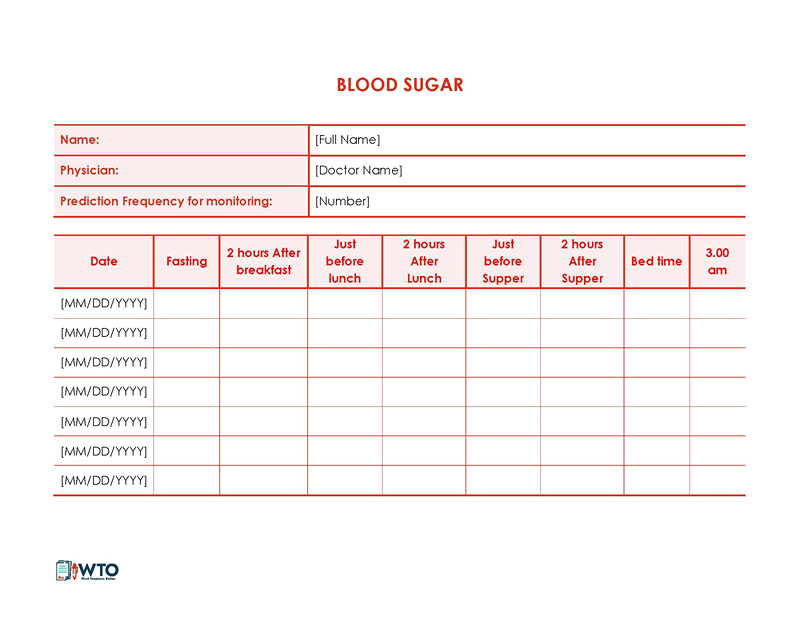
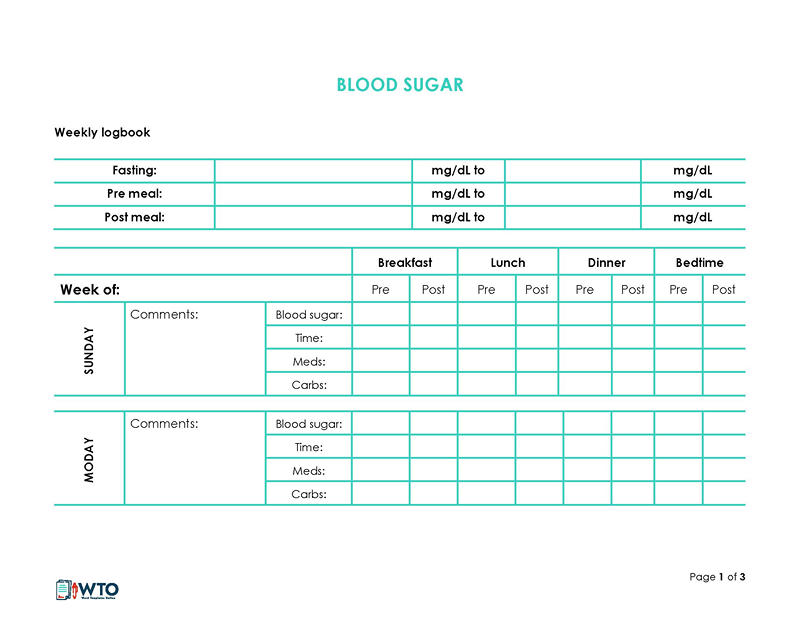
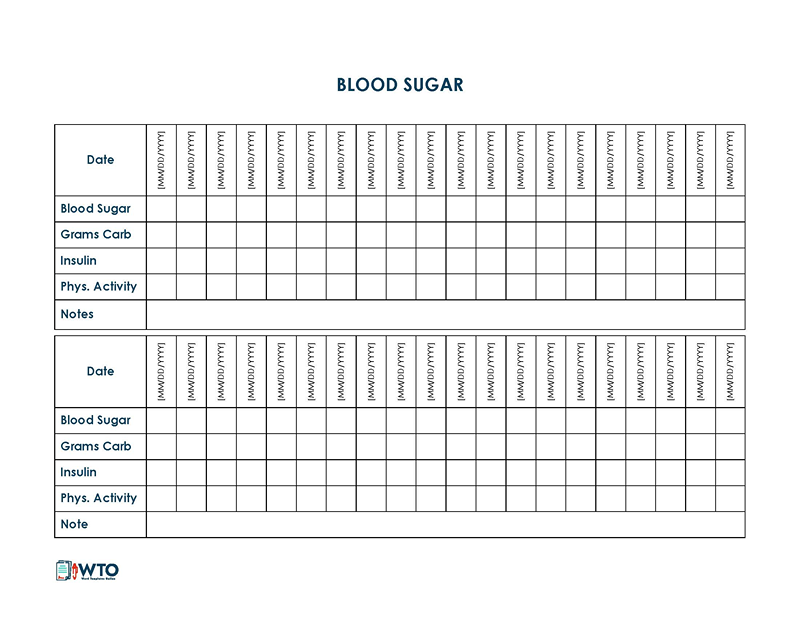
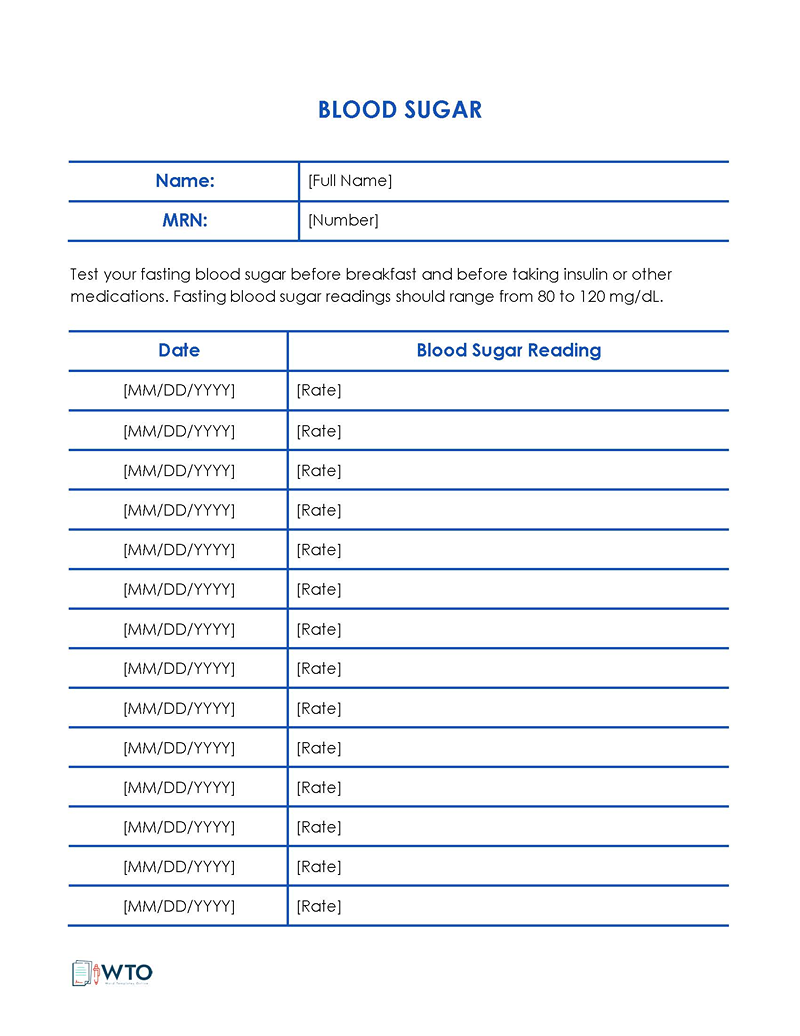
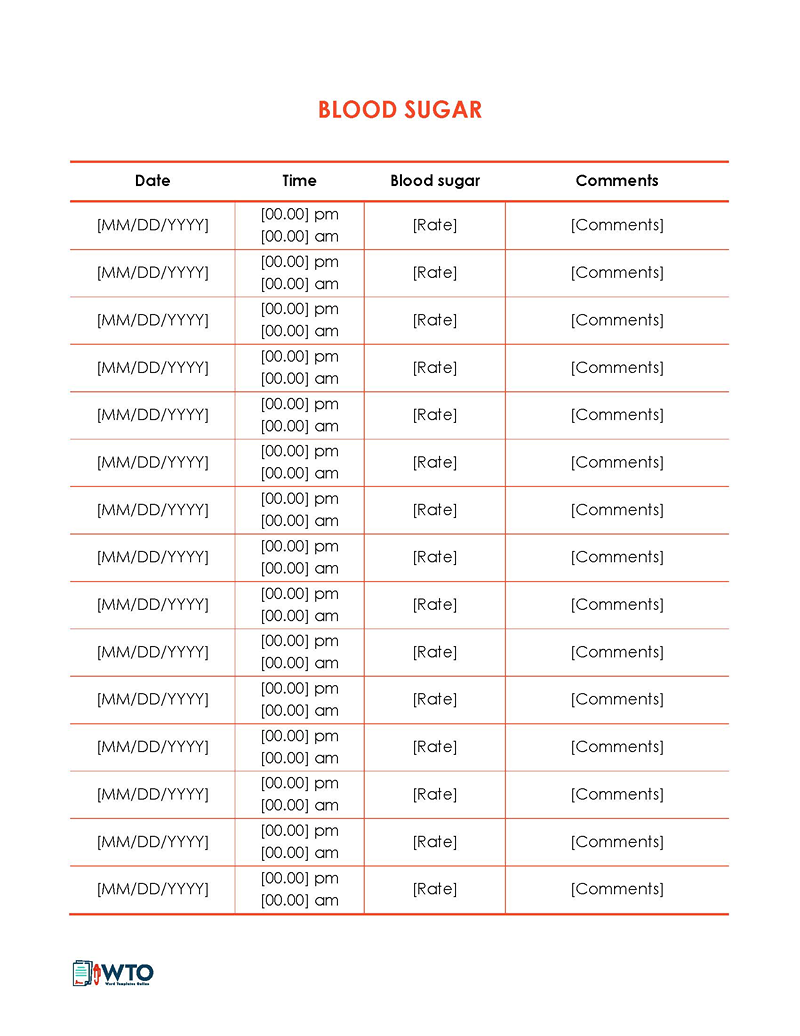
Types of Blood Sugar Log Sheets
Before embarking on blood glucose monitoring, you should first determine how regularly you intend to record your levels. Depending on the extent of your diabetes, you can utilize three different types of log sheets.
These include the following:
Daily blood sugar log sheet
This log sheet is used to record blood glucose levels at different times of the day. It includes the target sugar levels, date and time of the reading, the blood sugar level in milligrams per deciliter, any medication taken, food and beverage intake, physical activity, and any additional notes. This log sheet is commonly used by type 1 diabetics or patients with gestational diabetes who must monitor their levels periodically.
Weekly blood sugar log sheet
This log sheet is used to record blood glucose levels over the course of a week, usually once or twice a day. It is used by diabetics who do not have to monitor their blood sugar levels more frequently but need to identify trends to help them manage their condition more effectively. It details the target range, date and time of the reading, the blood glucose level, any medication, food and beverage intake, and any additional remarks.
Monthly blood sugar log sheet
This log sheet is used to record blood glucose levels over the course of a month. The reading is usually taken once or twice a day and recorded on the log sheet, which also contains the target levels, date and time of the reading, any medication, food and beverage intake, physical activities, and any notes. It is mainly used to identify trends in order to devise an effective diabetes management plan.
Blood Sugar Log Sheet Vs. Blood Pressure Log Sheet
Even though both log sheets are used to monitor aspects of an individual’s health, they are used in different situations and contain different elements.
A blood sugar log is used to record blood glucose levels over a specific period of time, often on a daily, weekly, or monthly basis. Diabetics and individuals with conditions that necessitate regular blood sugar monitoring frequently utilize this log sheet. It includes details such as the date and time of the reading, the blood glucose level in milligrams per deciliter, any medication being taken, food and beverage intake, physical activity, and any pertinent comments.
On the other hand, a blood pressure log sheet is a form used to record daily blood pressure. This sheet is primarily issued by a healthcare facility. It includes details such as the date and time of the reading, the systolic and diastolic blood pressure readings in millimeters of mercury (mmHg), heart rate, and any additional notes. Hypertensive and hypotensive patients commonly utilize it to monitor their blood pressure for better health management.
Unlike a blood glucose log, a blood pressure log sheet includes no details about food and beverage intake and physical activity.
Final Words
Blood glucose monitoring is a pertinent element of diabetes management. Readings that consistently remain within the acceptable ranges indicate that your medication, diet, exercise regimen, and other therapies are effective. A log sheet helps you identify trends in your blood sugar levels, helps with meal planning, and encourages self-management. The information gathered by the log sheet allows your healthcare provider to develop a treatment plan that adequately caters to your needs.
The log sheet includes the target sugar levels, the date and time of the reading, the reading in mg/dL, details about diet and physical exercise, and any additional notes. You can easily create a log sheet in MS Excel. However, you can download one of our free customizable templates to ease the process. They come pre-equipped with formulas and tables that instantly generate blood sugar sheets. These allow for more in-depth monitoring of your condition and successful diabetes management.

